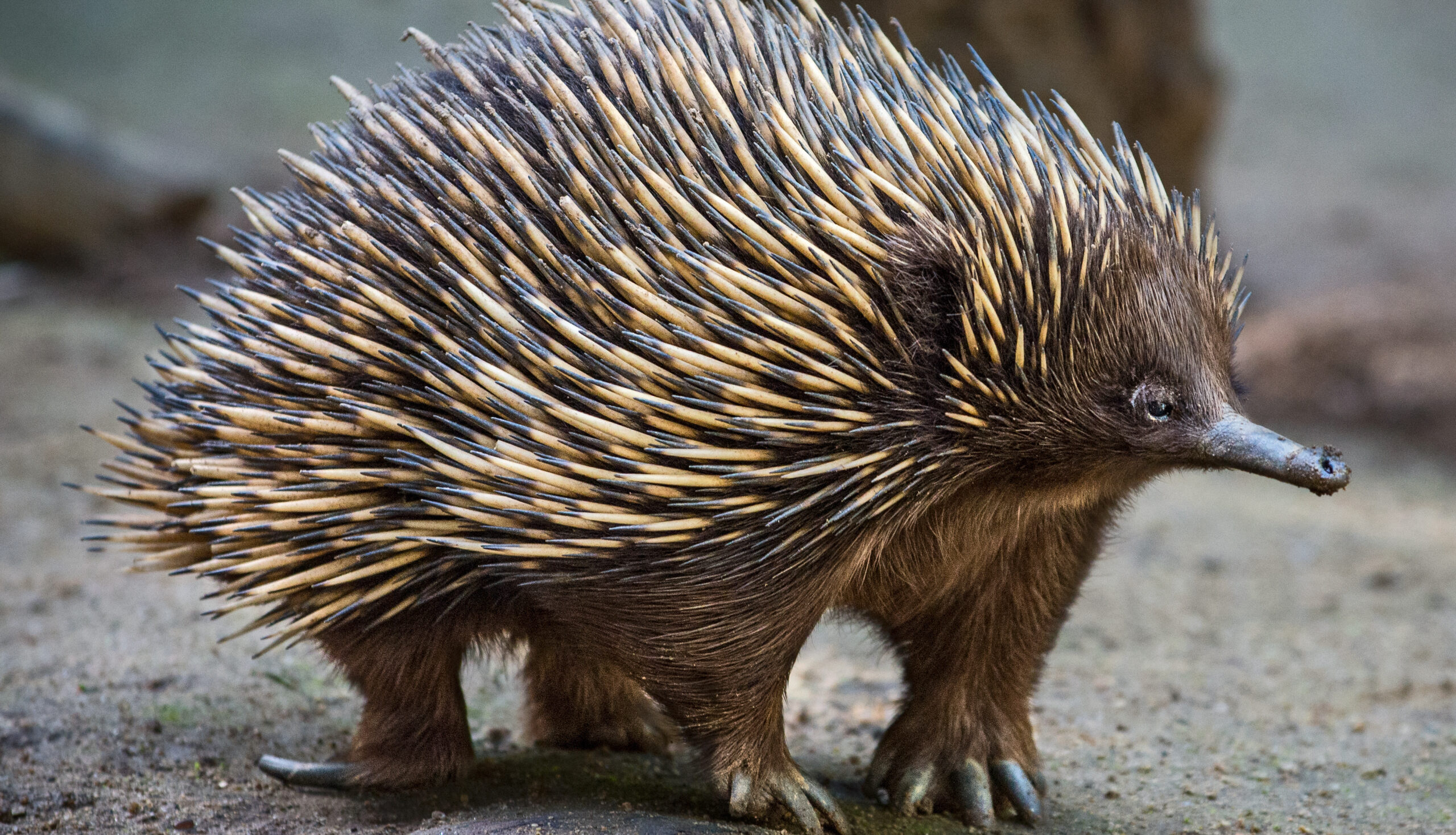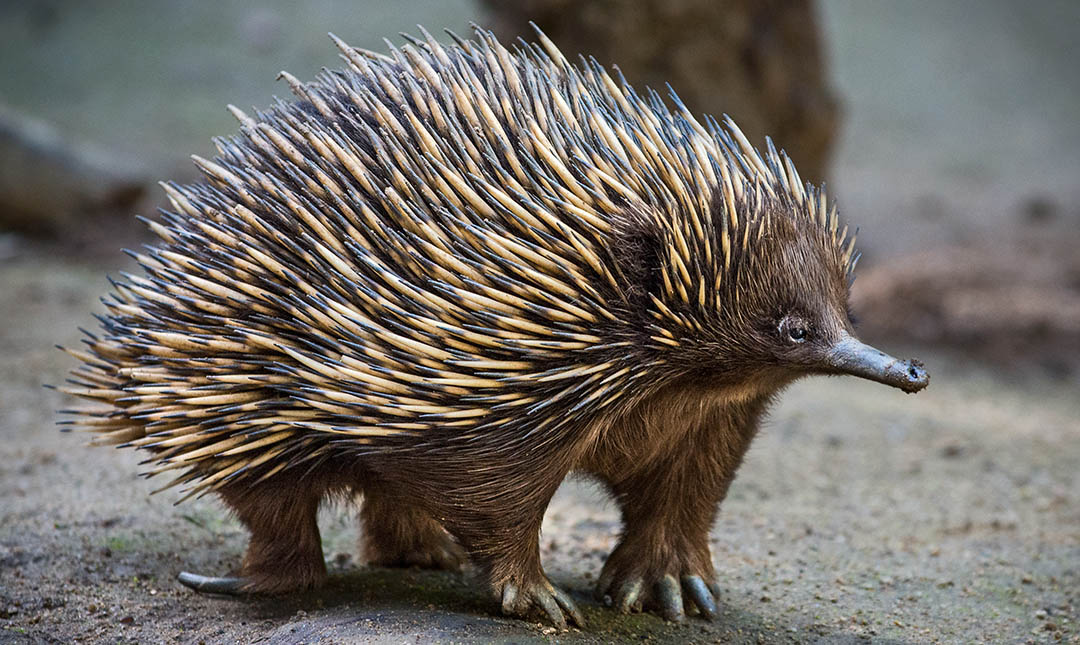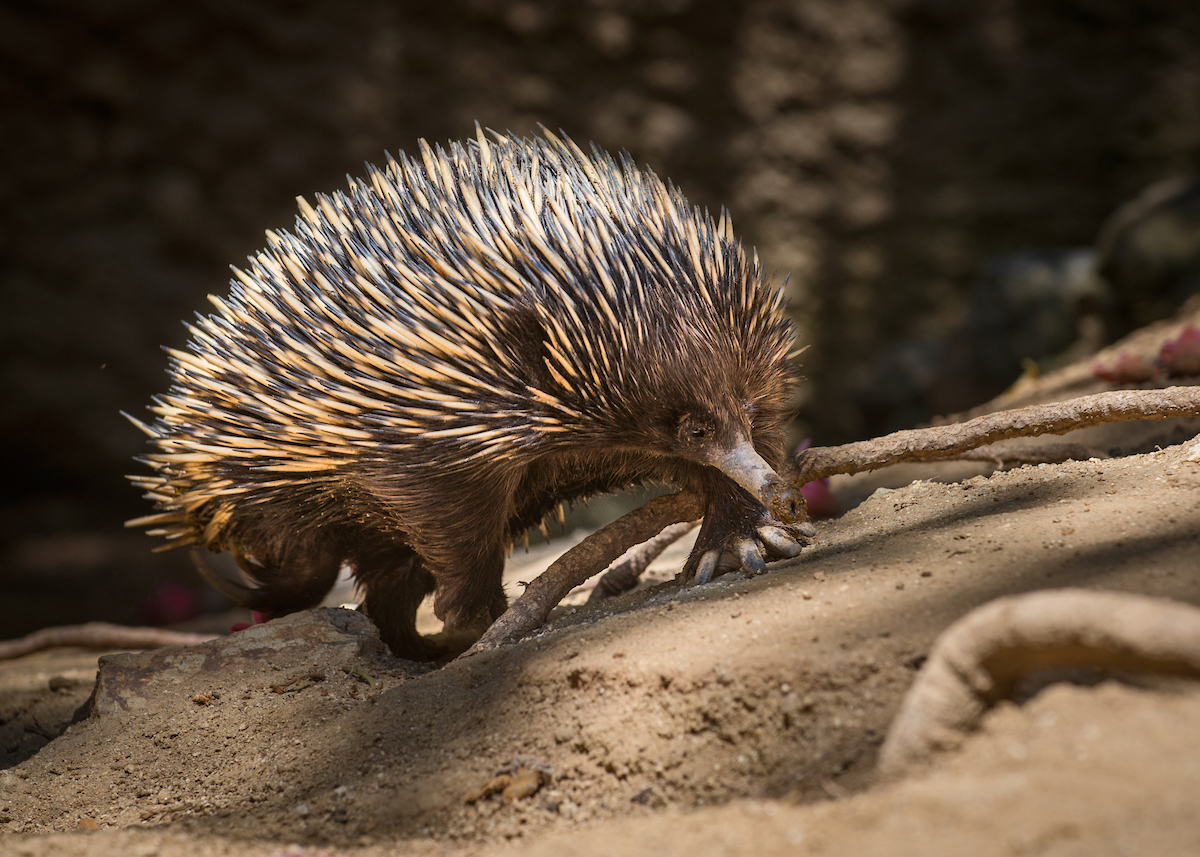About
The four species of echidna and the platypus are the only surviving members of an ancient order of mammals that lay eggs but also have mammary glands that produce milk to nurse their young. Echidnas are named after a Greek mythological creature who was half woman (mammal) and half snake (reptile).
With short quill-like spines, echidnas superficially resemble porcupines or hedgehogs, but they are not related. They are sometimes called “spiny anteaters” because they feed primarily on ants and termites, but they are not related to anteaters either. Like many insectivores, echidnas do not have teeth and instead lap up insects with their long, sticky tongues. Echidnas have extremely poor eyesight and locate food with receptors in their noses that are sensitive to subterranean vibrations and the minute electrical fields that insects generate.
The advantage of a diet of ants and termites is that these insects are abundant. The downside is that they are low in nutrition. To compensate, echidnas have a lower body temperature (86–91 degrees) than most mammals (97–103 degrees). This means they require 66 percent less energy than most comparably sized animals to survive. Echidnas are expert burrowers and are able to quickly sink into the ground until only a few protruding spines remain. If threatened, the echidna may also curl into a ball. Predators include feral cats, dogs, dingoes, and foxes.
Echidnas are solitary outside of the breeding season. A female echidna is pregnant for only 3 or 4 weeks, after which she lays a single egg that is the size of a dime. The egg is tucked into a primitive pouch, a fold of skin, that holds it in place. Ten days later the baby (called a puggle) emerges from the shell and begins to nurse. Echidnas do not have nipples; the female secretes milk from special glands in her pouch and the baby laps it up. The baby remains in the pouch until its spines develop. The mother then transfers the puggle to a burrow and returns every 5–10 days to feed the baby until it is big enough to go out on its own at seven months of age.
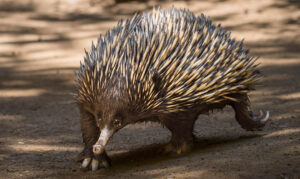
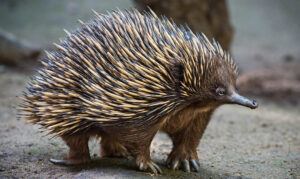
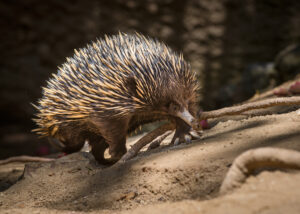
Habitat
Echidnas are found in a variety of habitats, from alpine regions to semi-arid areas, including meadows, heathlands, forests, woodlands, and deserts in Papua New Guinea, Tasmania, and Australia.
Diet
Echidnas are insectivores that feed primarily on termites and ants.
Physical Characteristics
Body length is 12 to 20 inches, weight ranges from 5 to 15 pounds, and the spines are about 2.5 inches long. Lifespan is estimated to be 40 to 50 years.
LOCATION WITHIN THE ZOO
You’ll find this animal in the Australia Section. See the Zoo Map.

